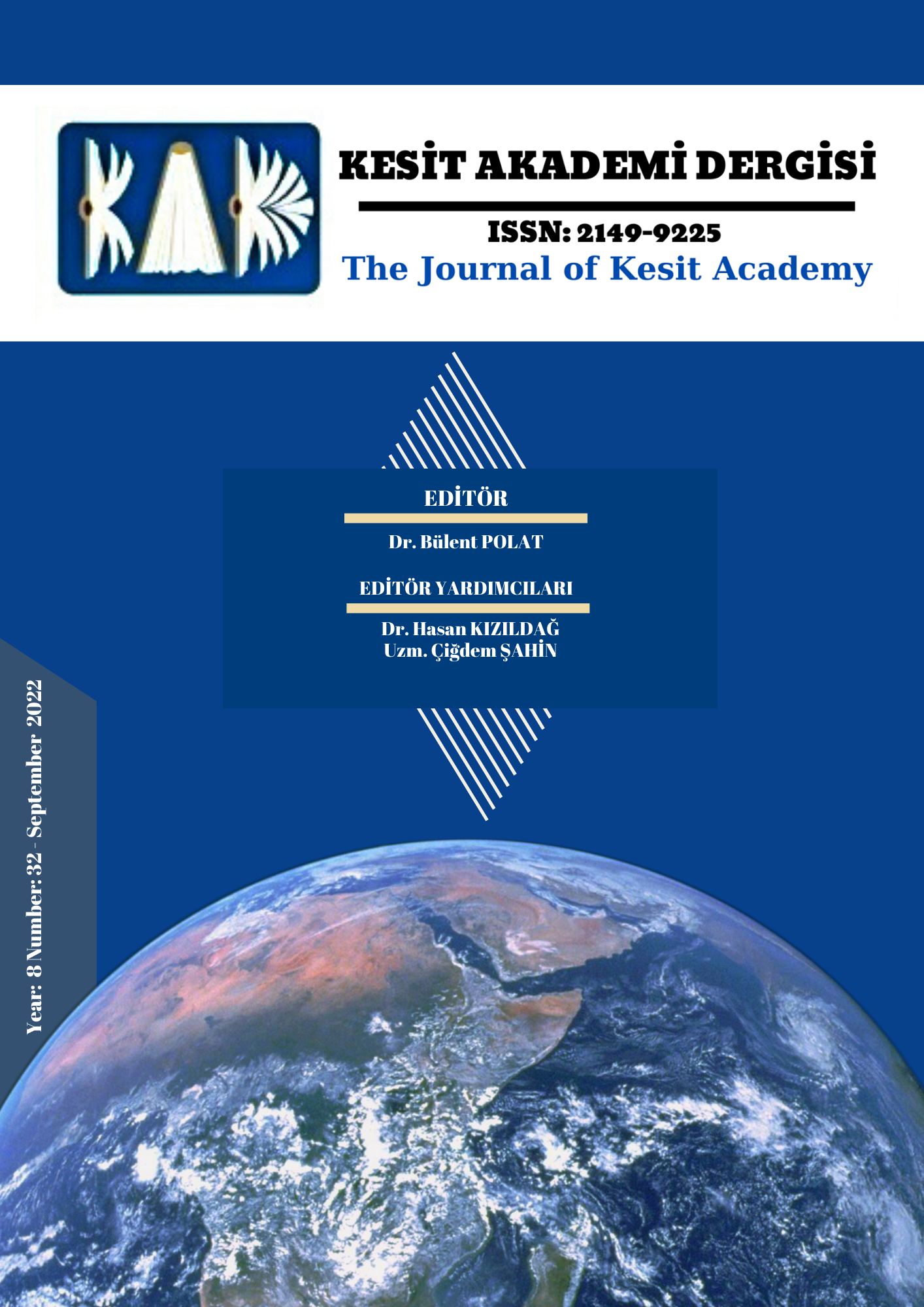Author :
Abstract
İletişim, insanlık tarihi kadar eski bir olgudur. Bu olgu insanlığın dünya üzerindeki baskınlığının en temel nüvelerinden birisidir. İnsan iletişim için tarih boyunca hep yeni enstrümanlar tasarlamış, üretmiş, kullanmıştır. İletişim alanından var olan gelişmeler mikro ölçekte insanı makro ölçekte de toplumu köktenci olarak etkiler. İletişim enstrümanlarını tasarlama, üretme ve tüketme hızı 21. yüzyılda hiç görülmemiş biçimde yükselmiştir. Teknolojik gerçekliklerin sebep olduğu bu durum dünya ölçeğinde bir yeni temsil oluşturmaktadır. Bu temsil gündelik hayattan özel hayata, özel mekan deneyiminden kamusal alan deneyimine her türlü eylemi etkiler. İnsan, kültür, toplum ve yaşayış bu hızla beraber yeni bir gerçekliğe evrilmektedir. Teknoloji, yazılım ve tasarım alanlarındaki gelişmeler sosyal varlığı ve insanlığı etkilemektedir. Bu alanlardaki gelişme ve değişmeler iletişim araç gereçlerinin tasarımlarını doğrudan şekillendirmektedir. Bu çalışma; iletişim araç gereçleri ve tasarımlarının, günümüz gerçekliğine etkilerine bir bakış sağlamaktadır. Birey ve meta arasındaki ilişkileri yeniden değerlendirip iletişim araç gereçleri ve bunların tasarımları noktasında toplumsal gerçeklikleri tartışmaktadır. Geçmişi anlayıp, günümüz gerçekliği ile geleceğe bakmaya çalışıp; yeni iletişim türleri, biçimleri ve enstrümanlarının tasarım ve birey üzerindeki etkisini ortaya koymaya çalışmaktadır. Bu gerçekliğe hizmet eden tasarımlar bireyi günbegün bilinen gerçeklikten uzaklaştırmaktadır. Ve bu gerçeklikler ile yeniden şekillenen hayat ve yaşayış; “sahip olduğumuz metaların sahip olduğu bizler” şekline evrilmiştir. Bununla beraber çalışma tasarımcıya yeni bir perspektif sunmaya ve ilgili alanda bilinen gerçeklikleri yeniden düşünmeye çağırmaktadır.
Keywords
Abstract
Communication is a phenomenon as old as the history of humanity. This phenomenon is one of the most fundamental facts of humanity's dominance over the world. Humans have always designed, produced and used new tools and equipment for communication throughout the history. Developments in the field of communication radically affect both people at the micro scale and the society at the macro scale. The speed of designing, producing and consuming communication instruments unprecedentedly increased in the 21st century. This situation caused by technological realities creates a new representation on a world scale. This representation affects all kinds of actions from daily life to private life, from experience in private spaces to experience in public spaces. In this context, human, culture, society and the manner of living are evolving into a new reality. Developments in field of technology, software and design affect the social existence and humanity. The developments and changes in these fields directly shape the design of communication tools and equipment. This study provides an overview on the effects of communication tools and equipment and their design on today’s reality. It aims to reevaluate the relations between individual and meta and discuss social realities in connection with communication instruments and their design. Once understanding the past, it attempts to look to the future with today’s reality; and suggest the effect of new types and forms of communication and instruments on design and individuals. The designs serving for this reality are moving individuals away from the known reality day by day. And the life and living reshaped with these realities evolved to a state “the metas we previously owned are now the owners of us”. At the same time, the work invites the designer to present a new perspective and rethink the realities known in the relevant field.
Keywords
- Arendt, H. (2012). İnsanlık durumu. İletişim Yayınları.
- Auge, M. (1997). Yer olmayanlar, üstmodernliğin antropolojisine giriş. Kesit Yayıncılık.
- Baudrillard, J. (2011). Simülakırlar ve simülasyonlar. Doğu Batı Yayınları.
- Brey, P. (2000). (preprint version) Technology as extension of human faculties. metaphysics, epistemology, and technology. Research in Philosophy and Technology, 19.
- Deleuze, G., & Guattari, F. (1990). Kapitalizm ve şizofreni 1 göçebebilimi incelemesi/savaş makinası. Bağlam Yayınları.
- Graham, S. (2002). Bridging urban digital divides, urban polarisation and information and communications technologies. Urban Studies, 39, 33–56.
- Hampton, K. N., Goulet, L. S. & Albanesius, G. (2014). Change in the social life of urban public spaces: the rise of mobile phones and women, and the decline of aloneness over thirty years. Urban Studies, 52(8), 1489–1504.
- Harvey, D. (2010). Postmodernliğin durumu: kültürel değişimin kökenleri. Metis Yayınları.
- Heidegger, M. (2011). Varlık ve zaman. Agora Kitaplığı.
- Kurfürst, S. (2011). Redefining public space in hanoi: places, practices and meaning. University of Passau.
- Laing, A. (2013). Work and workplaces in the digital city. Cure.
- Mitchell, W. J. (2005). E-topia: information and communication technologies and the transformation of urban life. The network societyfrom knowledge to policy. Johns Hopkins Center for Transatlantic Relations
- Park, N. (2010). Integration of internet use with public spaces: college students’ use of the wireless internet and offline socializing. Cyberpsychology. Journal of Psychosocial Research on Cyberspace, 4(2).
- Park, R. E. (1952). Human communities : the city and human ecology. New York Free Press.
- Sennett, R. (2010). Kamusal insanın çöküşü (3. Baskı). Ayrıntı Yayınları.
- Sınmaz, S. (2015). Gelişen iletişim teknolojilerinin kentsel yaşam ve kamusal mekânlar üzerindeki yansımaları. Tasarım+Kuram, 11(20), 63–75.
- Sökmenoğlu, A. ve Cağdaş, G. (2005). Enformasyon ve iletişim teknolojileri etkisinde kentsel yaşam, mekan ve sürdürülebilirlik. Planlamada Yeni Politika ve Stratejiler: Riskler ve Fırsatlar. Dünya Şehircilik Günü 29. Kolokyumu, 285–297.
- Toffler, A. (1998). Üçüncü dalga. Altın Kitaplar.
- Johnson, J. (2021). How many people use the internet? Statista. https://www.statista.com/statistics/617136/digital-population-worldwide/
- Erişim Tarihi: 16.06.2022 14:12
- O’Dea, S., (2021). Smartphone users worldwide 2016-2021. Statista. https://www.statista.com/statistics/330695/number-of-smartphone-usersworldwide/
- Erişim Tarihi: 16.06.2022 16:17
- Gottfried, H. (Yapımcı), Lumet, S. (Yönetmen), (1976). Network [Film]. Warner Bros. Pictures and Metro-Goldwyn-Mayer.
- Handelman, M., Lieberman, T., Hoberman, D., Lieberman, H. (Yapımcı), Mostow, J. (Yönetmen), (2009). Surrogates [Film]. Walt Disney Studios Motion Pictures.
- Nolan, C., Thomas, E. (Yapımcı), Nolan, C. (Yönetmen), (2010). Inception [Film]. Warner Bros. Pictures.
- Rodos, L. (Yapımcı), Orlowski, J. (Yönetmen), (2020). Social Dilemma [Film]. Netflix.
- Morris, J., Lasseter, J. (Yapımcı), Stanton, A. (Yönetmen), (2008). Wall e [Film]. Walt Disney Pictures.





